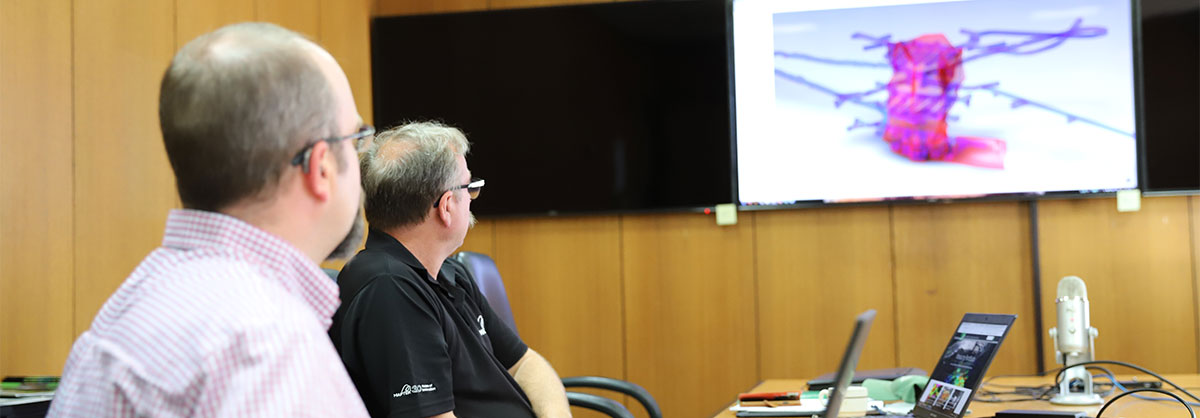December 2018 Issue Index
Strengthening underground design
Coupling fragmentation and break analysis tools will enhance the drill & blast process and facilitate a feedback cycle for continuous improvement.
Collaboration between Maptek and the developer of Aegis is set to close the loop on underground drill & blast design and measurement, boosting quality assurance and control in this key mining process.
Canada-based iRing Inc. is the developer of Aegis software, which is revolutionising underground drill & blast design and analysis.
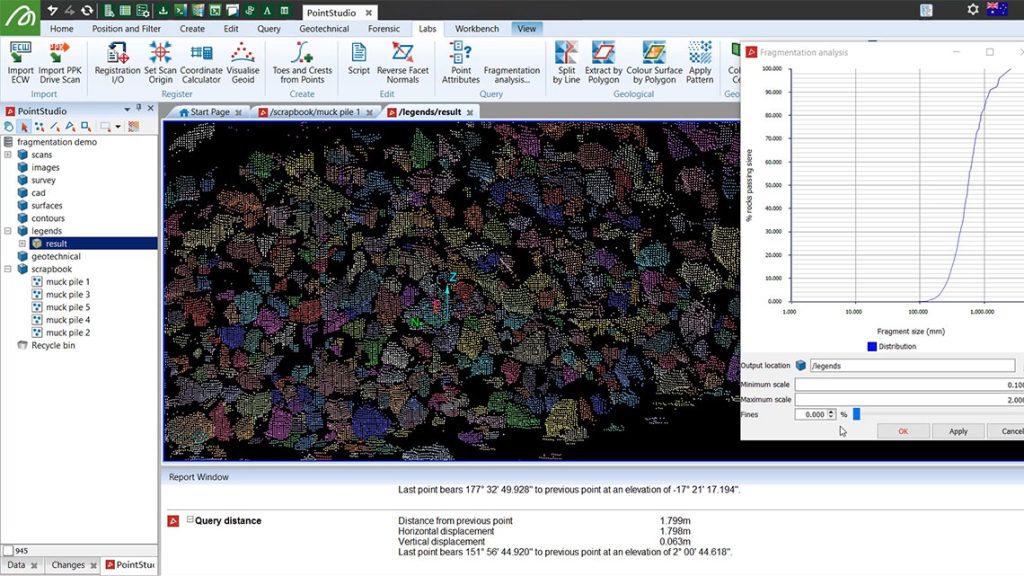
Vice President of Development at iRing, Troy Williams recently visited Australia and was excited by the potential for fragmentation analysis in Maptek PointStudio when used in conjunction with the new Aegis Break Analyzer.
The Maptek fragmentation approach is light years ahead of anything else we’ve seen.
Using 3D point clouds instead of 2D image-based photogrammetry provides a distinctly superior result for fragmentation modelling.
Aegis Break Analyzer allows engineers to design blasts based on the first principles of rock mechanics and uses geotechnical data collected on site every day to inform ongoing blast design.
Fragmentation analysis
Fragmentation analysis, available for customer trial in PointStudio 8, uses laser scan data to automatically identify individual rock pieces, enabling better analysis of blast results.
‘Maptek laser scanners and PointStudio software will be fundamental to measuring the fragmentation,’ said Williams.
‘Aegis will provide the front-end software and prediction tools to custom design every blast to ensure it meets the fragmentation specifications.’
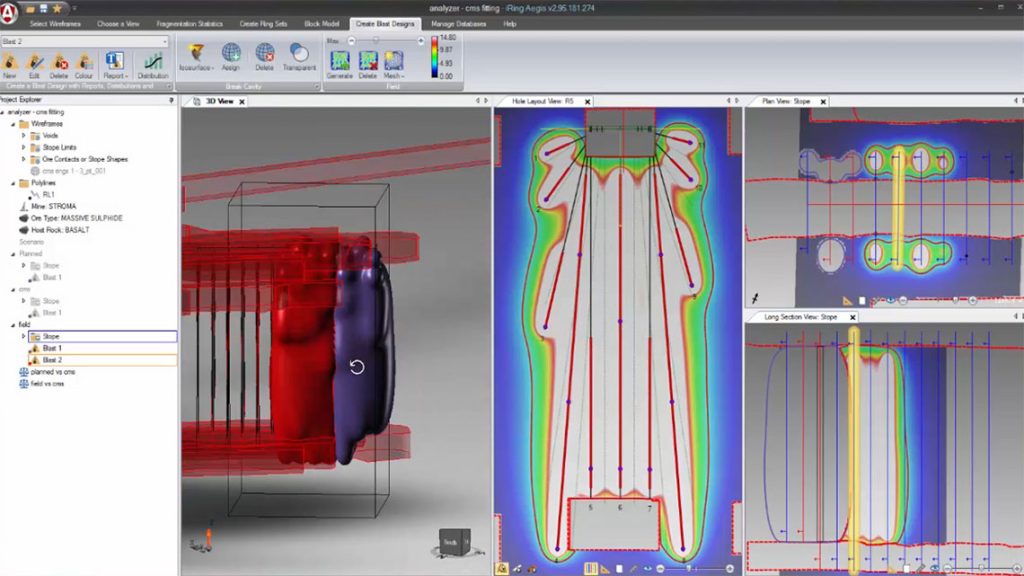
Williams said that combining the prediction and analysis tools will help achieve the goal of turning a mining operation into more of a manufacturing operation with repeatable processes.
While many areas in mining are repeatable, others are based on skill, experience and intuition. The aim is to capture that learning so that any drill & blast engineer can perform their job successfully.
This will add value at the mine level and also downstream in the mine-to-mill process.
Blast analysis
Williams said quality assurance and control was virtually non-existent in many underground drill & blast processes and sites would benefit from more scientific rigour.
‘We see the future is in blast analysis, treating blasting like any other underground process, not as a dark art where one skilled individual knows the mine by feel and can decide what the blast pattern is going to be regardless of the available information,’ he said.
Aegis and Maptek solutions can also work together effectively during the early stages of the drill & blast process. Aegis streamlines underground ring design, and laser scanning validates that drilling matches the plan, without interrupting production.
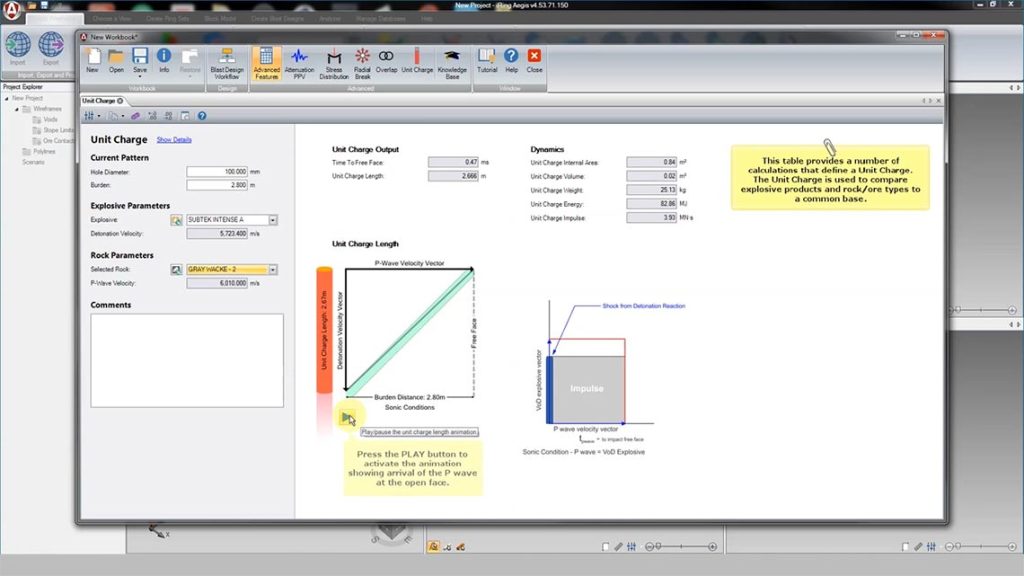
‘You’d be amazed how many operations don’t know exactly where the drillholes are located,’ Williams says. ‘With Maptek technology a scan of the working drift could reveal collar locations as a byproduct of a general scan.’
The ability to quickly measure as-drilled information can be the largest contributor to more reliable drill & blast.
Integration
When Williams met with Maptek, greater data integration between Aegis and Maptek software was high on the agenda.
Maptek Mining Engineer, Mike Winfield said that streamlining data use across Aegis, Maptek Vulcan and PointStudio would enhance the user experience and deliver better outcomes for mines.
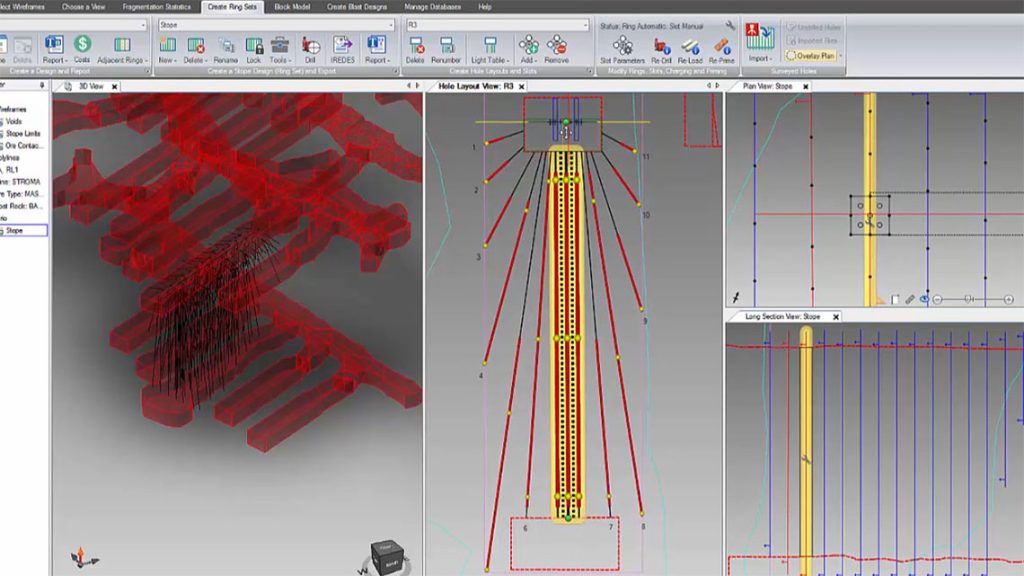
‘Triangulations and block model information could be loaded from Vulcan straight into Aegis for design work and then the data can return to Vulcan or go through to PointStudio,’ Winfield said.
‘Aegis has proven in some cases to speed up blast design up to 25 times. I can see its analysis tools having a huge impact for underground drill & blast processes when used alongside the Maptek capabilities.’
The Maptek Technology Roadmap points to the potential for exciting outcomes for underground mining through collaboration.
Thanks to
Troy Williams
Vice President, iRing Inc.
Shining a light on underground blast
Troy Williams, Vice President of Development iRing Inc. explains his reference to the ‘dark arts’.
My boss, who has 45 years of blasting experience, always calls it the dark arts, referring to the fact that underground blasting is an experience-based system where you use trial and error until you find something that works.
But it’s only good at that site and potentially only good at that area of the mine.
The aim with Aegis is to arm users with tools that focus on scientific facts – ‘this is what you really need to worry about, and this is how you can design your blast patterns’.

